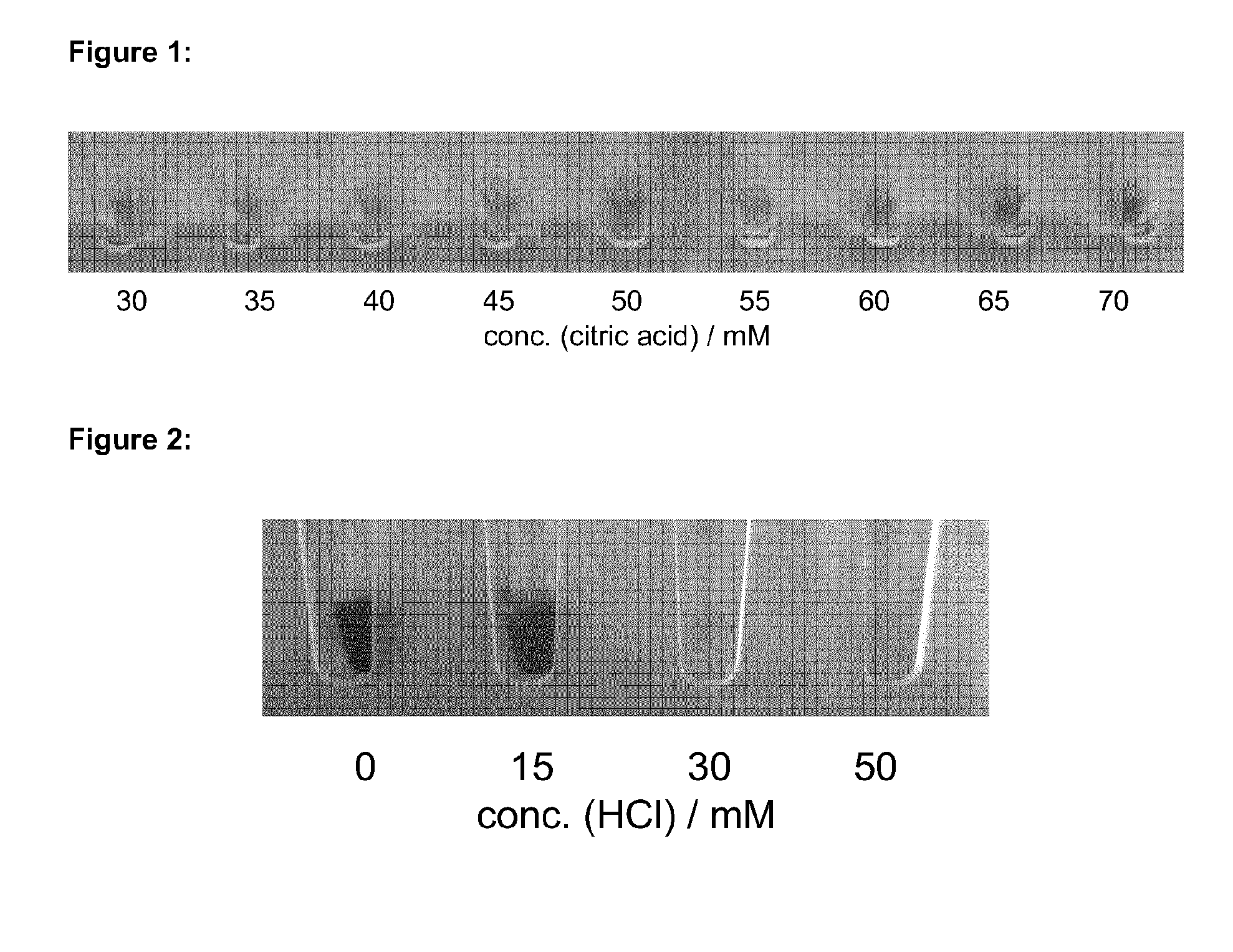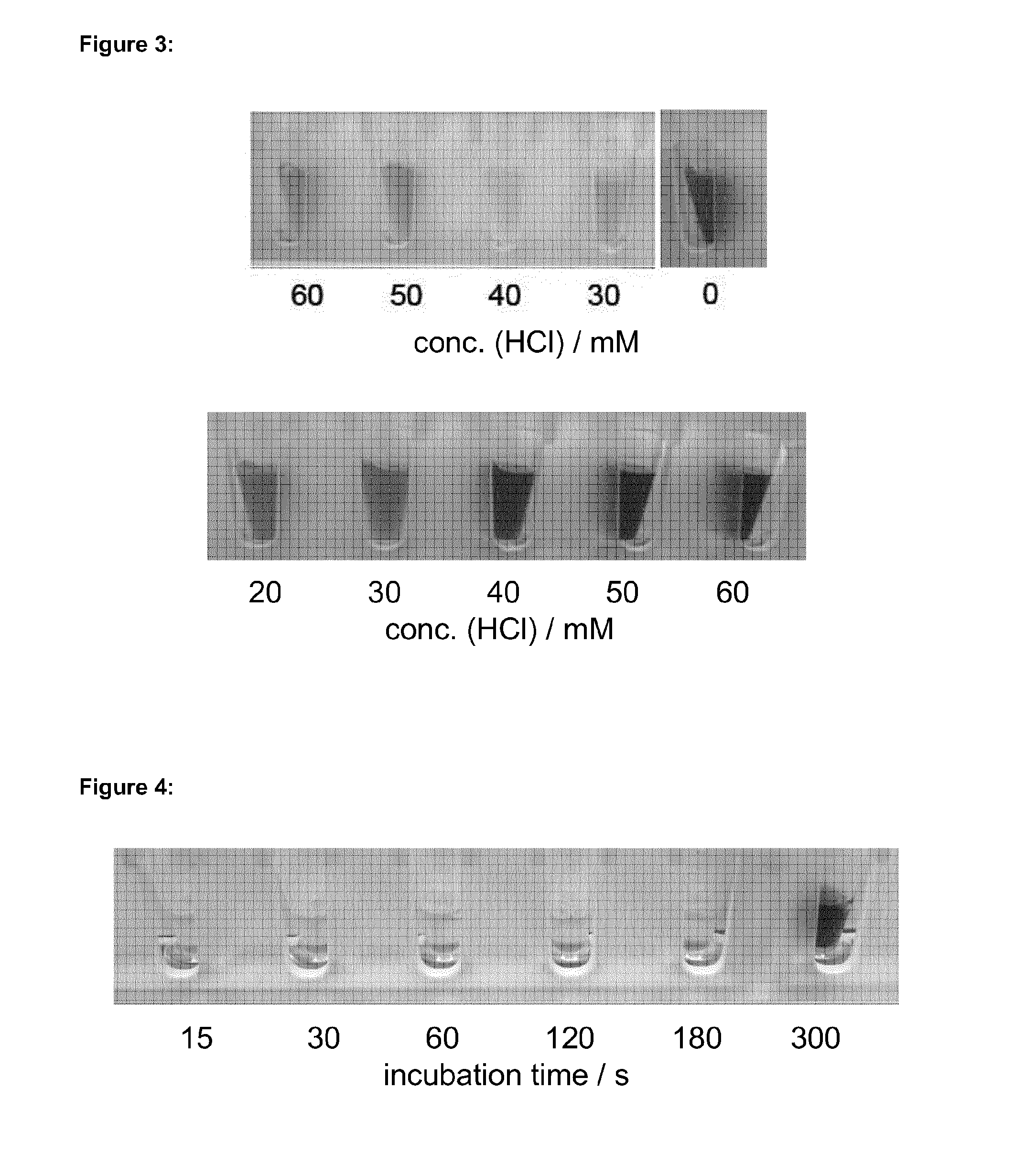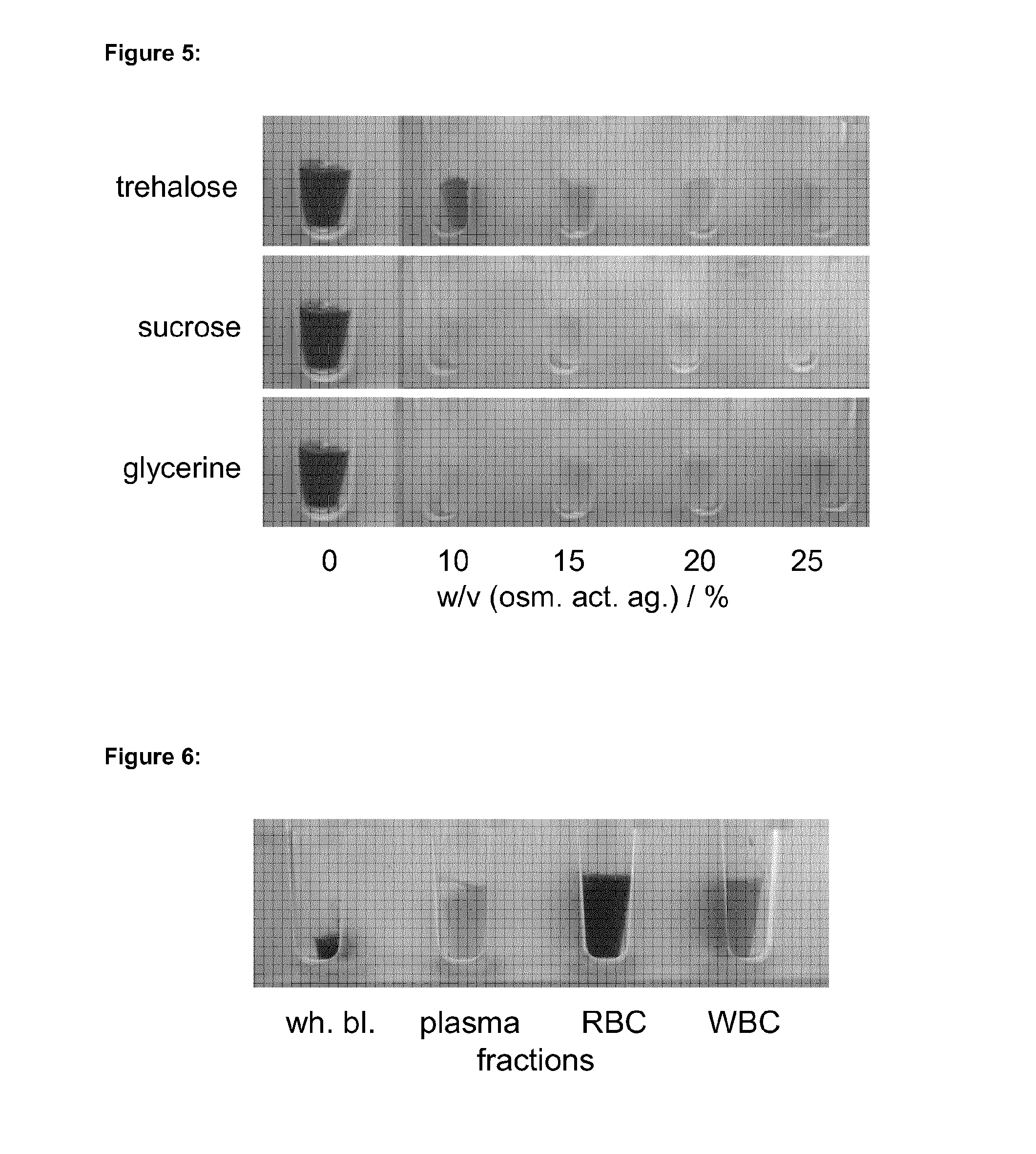Method for obtaining blood plasma from a whole blood sample
a whole blood sample and blood plasma technology, applied in the field of whole blood plasma extraction method, can solve the problems of inability to integrate standard downstream processes, time-consuming respective methods, high cost, etc., and achieves the effect of reducing error-prone, efficient aggregation of red blood cells, and reducing the number of blood plasma extractions
- Summary
- Abstract
- Description
- Claims
- Application Information
AI Technical Summary
Benefits of technology
Problems solved by technology
Method used
Image
Examples
example 1
Magnetic Separation of Blood Cells from Whole Blood
[0150]60 μl of EDTA stabilized whole blood were mixed in a 1.5 ml reaction vessel with 300 μl of composition (A) containing 50 mM citric acid and 0.85% (w / v) NaCl, briefly vortexted and incubated for 1 min at room temperature to induce red blood cell aggregation. Afterwards, 20 μl of a 5% (w / v) suspension of carboxylated magnetic beads (SeraMag DoubleSpeed Beads, Thermo Fisher) were added, the mixture was vortexed briefly and incubated for 30 sec at room temperature. For separating the magnetic beads with the bound red and white blood cells, the mixture was placed for 1 min in a magnetic separation devise. Finally, 150 μl of the separation supernatant were removed. The obtained blood plasma was clear and slightly yellow. To analyse, whether the supernatant comprised larger particles or unbound cells, the supernatant was centrifuged for 2 min at 6.000 rpm in a tabletop centrifuge. No pellet was formed at the bottom of the reaction ve...
example 2
Determination of Preferred Citric Acid Concentration Ranges
[0151]Example 2 was performed as described in Example 1, wherein however, the whole blood samples were mixed with a composition (A) containing 30, 35, 40, 45, 50, 55, 60, 65 or 70 mM citric acid (see FIG. 1) and again 0.85% (w / v) NaCl.
[0152]Results: Within a range of 30 to 60 mM citric acid, the separation of the blood cells provided the best results. The removed supernatant was clear and if at all only slightly reddish / orange (see FIG. 1) and no pellet was formed after centrifugation. Below said concentration range the RBCs were not successfully separated, as could be seen by the remaining turbidity of the obtained supernatant / blood plasma. Above said range of concentration the RBCs started to burst, as is indicated by the enhanced colouration of the supernatant. As described in the application above, it is possible to make pH value adaptions either in composition (A) or by adding an acid separately to the sample mixture in...
example 3
Aggregation of RBCs in the Presence of Magnetic Particles
[0153]The addition of magnetic particles to the aggregated RBCs is a further procedural step, that in order to provide a particularly rapid method, is preferably omitted. Example 3 investigates the possibility to add the magnetic particles before the aggregation of RBCs occurs. Example 3 was performed analogously to example 1. The magnetic particles, however, were either added together with composition (A) to the whole blood sample, or were added after the whole blood sample was contacted with composition (A) and accordingly, after the RBCs were already aggregated.
[0154]Results: The 150 μl of supernatant obtained after 1 min in a magnetic separation device were clear and slightly yellowish. It made no difference whether the magnetic particles were added before or after aggregation of the RBCs. Thus, the presence of magnetic particles during the aggregation phase did not cause any problems. To the contrary, if the magnetic part...
PUM
| Property | Measurement | Unit |
|---|---|---|
| temperature | aaaaa | aaaaa |
| temperature | aaaaa | aaaaa |
| volume | aaaaa | aaaaa |
Abstract
Description
Claims
Application Information
 Login to View More
Login to View More - R&D
- Intellectual Property
- Life Sciences
- Materials
- Tech Scout
- Unparalleled Data Quality
- Higher Quality Content
- 60% Fewer Hallucinations
Browse by: Latest US Patents, China's latest patents, Technical Efficacy Thesaurus, Application Domain, Technology Topic, Popular Technical Reports.
© 2025 PatSnap. All rights reserved.Legal|Privacy policy|Modern Slavery Act Transparency Statement|Sitemap|About US| Contact US: help@patsnap.com



